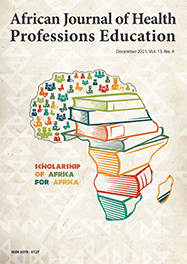Research

Towards Understanding the Quantitative Literacy Demands of a First-year Medical Curriculum
Abstract
Setting:
When designing a medical curriculum, assumptions that are made about students’ quantitative literacy competencies often lead to demands that students are unable to meet. In order to improve the match between the literacy demands of the curriculum and the literacy competencies of students, the demands need to be examined critically and the assumptions made explicit. Curriculum changes that reduce the articulation gap between demands and competencies are particularly important for broadening access and promoting success, in tertiary study, for students with disadvantaged educational backgrounds.
Objectives:
The objectives of this study are to survey the QL implicitly and explicitly contained in a course curriculum, in a manner that could be useful for the following purposes:
Raising awareness in Health Science lecturers of the nature and extent of the QL demands of their course materials.
Developing the theory relating to best practice for QL development in Health Sciences.
Informing the design of QL interventions.
Method:
We focus on the analysis of the quantitative literacy competencies required of a student engaging with text-based learning materials in the curriculum of a first year integrated human biology/epidemiology/biochemistry course. For the analysis we use a framework, which classifies quantitative material according to a mathematical and statistical dimension and a competencies dimension.
Results and Conclusions:
A range of examples is presented which illustrate that the implicit quantitative literacy demands of this first year course curriculum are substantial and varied.
When designing a medical curriculum, assumptions that are made about students’ quantitative literacy competencies often lead to demands that students are unable to meet. In order to improve the match between the literacy demands of the curriculum and the literacy competencies of students, the demands need to be examined critically and the assumptions made explicit. Curriculum changes that reduce the articulation gap between demands and competencies are particularly important for broadening access and promoting success, in tertiary study, for students with disadvantaged educational backgrounds.
Objectives:
The objectives of this study are to survey the QL implicitly and explicitly contained in a course curriculum, in a manner that could be useful for the following purposes:
Raising awareness in Health Science lecturers of the nature and extent of the QL demands of their course materials.
Developing the theory relating to best practice for QL development in Health Sciences.
Informing the design of QL interventions.
Method:
We focus on the analysis of the quantitative literacy competencies required of a student engaging with text-based learning materials in the curriculum of a first year integrated human biology/epidemiology/biochemistry course. For the analysis we use a framework, which classifies quantitative material according to a mathematical and statistical dimension and a competencies dimension.
Results and Conclusions:
A range of examples is presented which illustrate that the implicit quantitative literacy demands of this first year course curriculum are substantial and varied.
Authors' affiliations
Vera Frith, UCT
Geney Gunston, UCT
Full Text
Keywords
Quantitative literacy
Cite this article
African Journal of Health Professions Education 2011;3(1):19-23.
Article History
Date submitted: 2011-05-15
Date published: 2011-06-17
Date published: 2011-06-17
Article Views
Abstract views: 6811
Full text views: 3127
Full text views: 3127




.jpg)
Comments on this article
*Read our policy for posting comments here